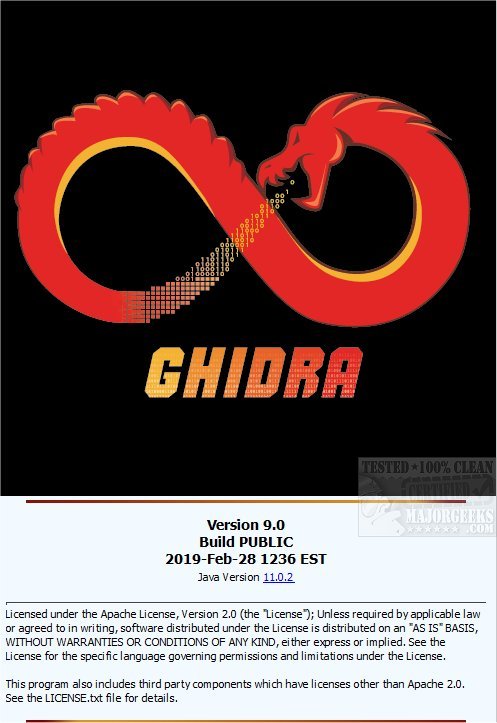Ghidra, an open-source multi-platform software reverse engineering (SRE) framework, has been developed and maintained by the National Security Agency (NSA) Research Directorate. The toolset is designed to facilitate the analysis of compiled code and offers a wide array of advanced software analysis functionalities, such as disassembly, assembly, decompilation, and graphing. These features are enhanced by scripting capabilities, making Ghidra a powerful ally for software developers and reverse engineers alike.
Key Features of Ghidra:
- Comprehensive Analysis Tools: Ghidra provides tools for dissecting and reconstructing programs, converting compiled code back to a human-readable format, and generating visual representations of the code structure.
- Support for Various Architectures: It is compatible with multiple processor instruction sets and executable formats, ensuring versatility across different platforms.
- Interactive and Automated Modes: Ghidra can be utilized in both user-interactive and automated modes, catering to a wide range of reverse engineering tasks.
- Customizability: Users can develop their own plugins and scripts using the available API, leveraging Java or Python to extend Ghidra’s functionality to meet specific analytical requirements.
Enhancing Cybersecurity Capabilities:
Originally developed to bolster the NSA's cybersecurity mission, Ghidra addresses collaboration and scalability challenges within complex Site Reliability Engineering (SRE) projects. It has proven instrumental in analyzing malicious code, providing insights that help SRE analysts identify vulnerabilities in networks and systems.
The Verdict on Ghidra:
Ghidra stands out as an exceptional tool for static analysis of compiled software, especially in scenarios where source code or documentation is lacking. It is particularly favored for malware analysis and the dissection of complex software systems. Its technical capabilities, coupled with user-friendly resources such as installation guides and keyboard shortcut cheatsheets, make Ghidra an invaluable asset for security researchers and professionals.
Future Directions:
As Ghidra continues to evolve, users can anticipate improvements in its analytical tools, as well as enhanced community support for custom plugins and scripts. The open-source nature of Ghidra encourages collaboration and innovation amongst users, paving the way for even more robust features and capabilities in future releases. The ongoing updates signify the NSA's commitment to providing powerful resources for cybersecurity professionals, ensuring they are well-equipped to tackle the challenges of modern software environments
Key Features of Ghidra:
- Comprehensive Analysis Tools: Ghidra provides tools for dissecting and reconstructing programs, converting compiled code back to a human-readable format, and generating visual representations of the code structure.
- Support for Various Architectures: It is compatible with multiple processor instruction sets and executable formats, ensuring versatility across different platforms.
- Interactive and Automated Modes: Ghidra can be utilized in both user-interactive and automated modes, catering to a wide range of reverse engineering tasks.
- Customizability: Users can develop their own plugins and scripts using the available API, leveraging Java or Python to extend Ghidra’s functionality to meet specific analytical requirements.
Enhancing Cybersecurity Capabilities:
Originally developed to bolster the NSA's cybersecurity mission, Ghidra addresses collaboration and scalability challenges within complex Site Reliability Engineering (SRE) projects. It has proven instrumental in analyzing malicious code, providing insights that help SRE analysts identify vulnerabilities in networks and systems.
The Verdict on Ghidra:
Ghidra stands out as an exceptional tool for static analysis of compiled software, especially in scenarios where source code or documentation is lacking. It is particularly favored for malware analysis and the dissection of complex software systems. Its technical capabilities, coupled with user-friendly resources such as installation guides and keyboard shortcut cheatsheets, make Ghidra an invaluable asset for security researchers and professionals.
Future Directions:
As Ghidra continues to evolve, users can anticipate improvements in its analytical tools, as well as enhanced community support for custom plugins and scripts. The open-source nature of Ghidra encourages collaboration and innovation amongst users, paving the way for even more robust features and capabilities in future releases. The ongoing updates signify the NSA's commitment to providing powerful resources for cybersecurity professionals, ensuring they are well-equipped to tackle the challenges of modern software environments
Ghidra 11.4 released
Ghidra is an Open Source multi-platform software reverse engineering (SRE) framework created and maintained by the National Security Agency Research Directorate.


